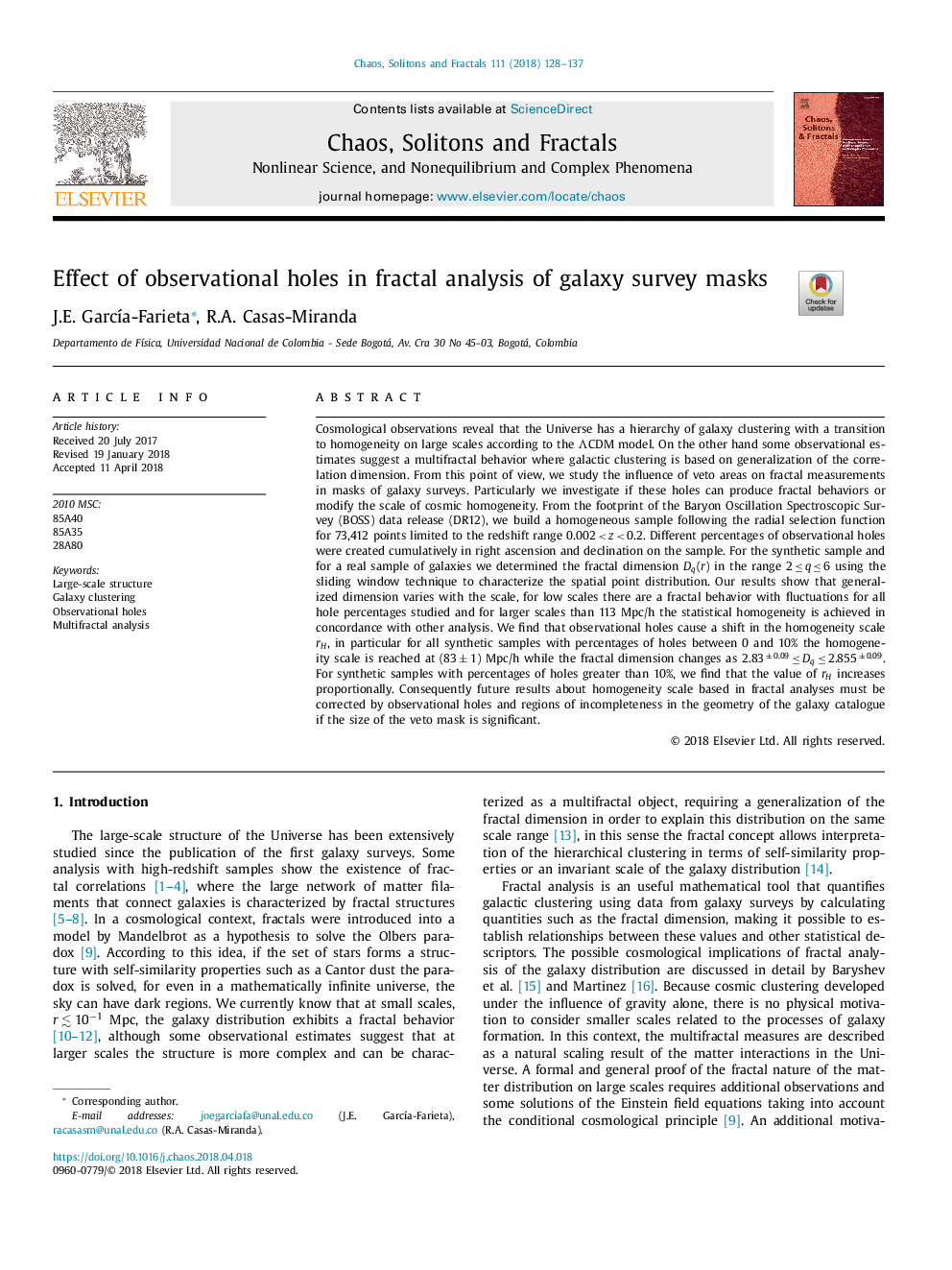| Article ID | Journal | Published Year | Pages | File Type |
|---|---|---|---|---|
| 8253642 | Chaos, Solitons & Fractals | 2018 | 10 Pages |
Abstract
Cosmological observations reveal that the Universe has a hierarchy of galaxy clustering with a transition to homogeneity on large scales according to the ÎCDM model. On the other hand some observational estimates suggest a multifractal behavior where galactic clustering is based on generalization of the correlation dimension. From this point of view, we study the influence of veto areas on fractal measurements in masks of galaxy surveys. Particularly we investigate if these holes can produce fractal behaviors or modify the scale of cosmic homogeneity. From the footprint of the Baryon Oscillation Spectroscopic Survey (BOSS) data release (DR12), we build a homogeneous sample following the radial selection function for 73,412 points limited to the redshift range 0.002â¯<â¯zâ¯<â¯0.2. Different percentages of observational holes were created cumulatively in right ascension and declination on the sample. For the synthetic sample and for a real sample of galaxies we determined the fractal dimension Dq(r) in the range 2â¯â¤â¯qâ¯â¤â¯6 using the sliding window technique to characterize the spatial point distribution. Our results show that generalized dimension varies with the scale, for low scales there are a fractal behavior with fluctuations for all hole percentages studied and for larger scales than 113 Mpc/h the statistical homogeneity is achieved in concordance with other analysis. We find that observational holes cause a shift in the homogeneity scale rH, in particular for all synthetic samples with percentages of holes between 0 and 10% the homogeneity scale is reached at (83â¯Â±â¯1) Mpc/h while the fractal dimension changes as 2.83â¯Â±â¯0.09â¯â¤â¯Dqâ¯â¤â¯2.855â¯Â±â¯0.09. For synthetic samples with percentages of holes greater than 10%, we find that the value of rH increases proportionally. Consequently future results about homogeneity scale based in fractal analyses must be corrected by observational holes and regions of incompleteness in the geometry of the galaxy catalogue if the size of the veto mask is significant.
Related Topics
Physical Sciences and Engineering
Physics and Astronomy
Statistical and Nonlinear Physics
Authors
J.E. GarcÃa-Farieta, R.A. Casas-Miranda,
